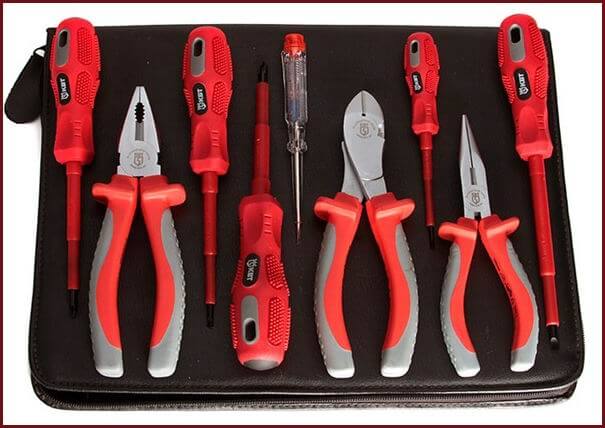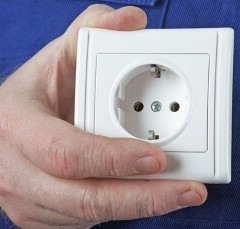First Aid Rules for Electric Shock
What could be causing the trouble?
The main reason for electric shock to a person is, of course, non-observance of safety measures and neglect of the basic rules of electrical work. You must clearly understand that any work with electrical wiring must be carried out with a dead network (even if you decide unscrew the bursting bulb) in protective equipment.
Another reason is the poor condition of the wiring, which again occurs due to the fact that there is no audit and timely replacement of damaged elements. Of course, accidents are not excluded when a person does not know about the danger and simply becomes a victim (for example, there was an interruption in the cable that he accidentally touched). In any case, the trouble has already occurred and it is necessary to immediately proceed to the provision of first aid to the victim.
What actions should be taken?
If, in your presence, a person is exposed to electric shock, you must immediately take a sequence of actions, which we will dwell on in more detail. The first aid algorithm will be presented in stages in pictures and with a brief description of all rescue measures.
Prevent direct contact with the conductor
If possible, disable circuit breaker or a switch, if the device is nearby. If there is no switch nearby, in no case waste time searching for it. Take any improvised item that does not conduct current and flip the cable to the side as shown in the photo.

If there is an ax nearby with an insulated handle, then cut the conductive core, as sometimes the brush grips the cable tightly as a result of the defeat, and just like that you will not break the contact.
Another way to save a person from electric shock is to grab him by the clothes and pull him to the side. In this case, you need to act carefully so that when helping you do not touch the body, because it will be a vehicle, and you too will be able to become a victim.
Move the person to a safe place.
After the contact is broken, you need to remove the victim from the danger zone, at least 10 meters further. You must lay the person on the floor and provide peace.
 To prevent the victim from catching a cold, pre-lay some litter on the surface.
To prevent the victim from catching a cold, pre-lay some litter on the surface.
Quickly analyze the condition
The faster you report on the condition, the faster it will be possible to move on to further measures for first aid in case of electric shock. If there is no visible damage and the victim is conscious, it is necessary to provide him with peace, give 20-25 drops of valerian and, if possible, drink warm tea. An ambulance call is required in any case, as sometimes the consequences do not follow immediately and may affect health over time. If a person faints due to electric shock, things are much worse. First check your breathing and pulse, then the pupils (if narrow, then the condition is uncritical). For everything about everything you have 15-20 seconds, each of which is very important.
When assisting, pay attention to the teeth, if they are closed they must be carefully opened as follows:
Be sure to unfasten your shirt and belt so that they do not impede breathing. If the victim has no signs of life, it is urgent to switch to artificial respiration and indirect heart massage. Without wasting time, also call "ambulance".

Heal wounds
Electric shock to a person can cause various kinds of damage: wounds, burns, carbonization of parts of the body. While doctors will go to the scene, you can use the first-aid kit and implement the following measures for the provision of first aid:
- treat the wound with iodine, a solution of potassium permanganate or alcohol;
- apply a bandage moistened with a solution of furatsilin (0.01%) to the damaged area;
- give the victim a painkiller (for example, aspirin).

Other treatment measures: injections and rubbing should not be done if you do not have special skills, because improper self-medication can only hurt and aggravate the situation.
That's the whole first aid instruction for a person with an electric shock. We hope that this memo served you for informational purposes only! Finally, we bring to your attention a visual video lesson:
Personal Protective Equipment
So that you personally do not encounter an electric shock during electrical work, you must first take care of your safety and purchase personal protective equipment.
Minimum electrician tool kit must include:
- dielectric gloves and boots;
- tool with an insulated handle;
- measuring instruments;
- insulating helmet.


As you can see, the kit is quite small, but at the same time it can prevent a person from getting an electric shock.
Household precautions
Most often, in domestic conditions, current breakdowns occur due to the fact that protective equipment is not provided, and safety precautions are not observed.
Of the main measures that you must take at home, highlight:
- grounding installation all powerful electrical appliances;
- RCD installation and circuit breaker;
- isolation of all exposed veins that are available;
- compliance with safety precautions during installation in rooms with high humidity (bath, bathtub, garage inspection hole, etc.); All sockets, switches, fixtures must be waterproof.
If all these measures are followed, then first aid in case of electric shock is not required!
Recommended reading:







